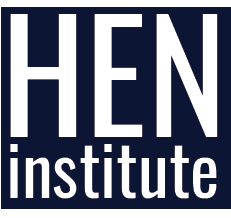Hen Institute: Ambiguity, Institutions, and Impermanence in Public Art
Hen Institute is a public art project that is composed of a mobile chicken coop and classroom inhabited by egg laying chickens. Hen Institute invites Raleigh residents to use Hens as a curatorial framework to create artistic, community-based, and educational programs. Themes include but are not limited to, sustenance, protection, feminism, flightlessness, nesting, community, sustainability, home, rural, courage, motherhood, nutrition, and generosity.
Occurring at a variety of locations throughout the city of Raleigh, an assortment of creative and educational performances, exhibits, lectures, and workshops will happen on site at the coop. Community meals created off-side by guest chefs using eggs produced by the hens will compare ideas of creative and educational nourishment to food related nourishment. Raleigh residents are also invited to become Chicken Stewards who will care for the hens and take home the eggs.
While most public sculptures and artworks are imitations of life, Hen Institute is a public artwork that is life. The physical coop, the hens themselves, and the activities that center around the coop are considered building blocks that make up this public artwork and sculpture. Public artwork is often ingrained with an expectation for permanence. On the contrary, Hen Institute uses impermanence as a crucial element. Hen Institute is mobile and exists within different locations and communities; the hens age and respond with the changing seasons; and people come and go through a variety of ephemeral experiences. Impermanence can allow public artworks to be responsive to, and in context with, its audience. Including impermanence into the repertoire of public sculptures also allows it to imitate life.
Hen Institute offers its audience a variety of experiences that extend beyond the traditional expectation of a public artwork. Hen Institute goes further then this initial aesthetic experience and offers community programming, social events, and educational opportunities. Because of this extended engagement, culture, collaboration, and exchange of knowledge emerges an important element within the artwork.
For some people, Hen Institute is an artwork itself, encompassing all the chickens, collaborators, and knowledge exchange. For others, Hen Institute is a classroom, a community chicken coop, or an event space. Not one of these impressions is a wrong one and in-fact, the way the project is framed is meant to encourage this spectrum of identity. This is where ambiguity becomes a useful tool for participant engagement. When there isn’t one definitive perception of the project, people can come to their own conclusion which automatically personalizes the project and thus makes it more accessible to the various communities for which the project is intended.
For those producing or curating programs on site at Hen Institute, the ambiguity lies in the curatorial framework. At first glance, limiting the themes of the projects that happen on site to just hens seems stifling. Instead, it allows creators to contemplate the complexity of the concept where such a seemingly simple noun can become a whole universe unto itself. Whether through education, visual art, dance, theater, poetry, sustainability, and more, the hen become a launching pad to new ideas approached through a spectrum of disciplines.
When approaching an institute as an art project artists are able to play with everyday power structures to a larger degree. Artists can work from the ground up and redefine what an institute is, or alter existing institutes to fit their agenda. It brings a new perspective, and a sense of experimentation that allows for institutes to become something else entirely. This is an important role for artists in general, to be able to shape the world that they want to live in. If there are not institutions in a sphere that are helpful to a community, then artists and creatives can simply make their own.
When enacting a social practice project and hoping to have a wide variety of participation from people who are not familiar with the lexicon of social practice or contemporary art, you can sometimes frame a project as something else entirely in order for the participants to feel familiar with what they are interacting with. People rely on institutes and interact with them every single day. The same cannot be always said about contemporary art. To promote a more universal interaction with a project, it can be beneficial to call it an institute.
It is my hope that Hen Institute can be many things for many different people. I hope that it allows its participants to feel empowered to redefine or create new institutions within their own spheres. I hope that through the curatorial framework of the hen, they can have a new and unique experience. And finally, I hope they leave not only with a full head of inspiration, but with a full belly.

